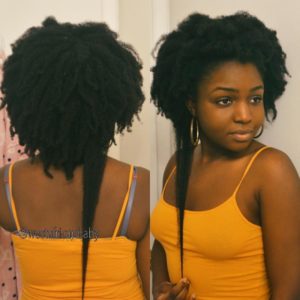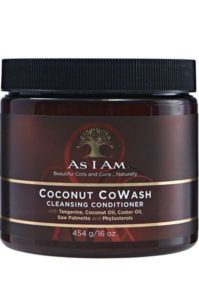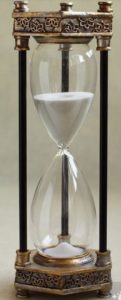How to Grow Natural Black Hair
There are a lot of myths out there that lead many people to believe that it’s difficult to grow Black hair. While there are unique challenges associated with caring for naturally kinky and curly hair (even if it’s in a chemically relaxed state), it is possible to grow and retain length if a proper hair care routine is established. Here are some common myths about growing Black hair and some tips for finding a routine that can help you meet your hair goals.
1Black Hair Growth Myths
2Black Hair Growth Facts
- Fact 1: Hair growth varies from person to person, but the average rate, regardless of hair texture, is ½ inch per month. A lot of people confuse poor length retention with slow hair growth. Length retention is the real issue when it comes to naturally kinky-curly hair, as it is typically much more fragile and prone to breakage.
- Fact 2: There is such a thing as terminal length, which is the longest possible length your hair will reach if it’s not cut and if it doesn’t succumb to breakage. This varies from person to person and is largely affected by genetics, but many factors (mainly breakage) prevent a lot of people from reaching their terminal length.
- Fact 3: Trimming your hair will not make it grow. After all, your hair grows from your scalp and trims happen at the ends of your hair. However, trimming split ends can help prevent further breakage, which can help with length retention.
- Fact 4: Protective styles can definitely help guard your hair from breakage while it grows. However, protective styles that are too tight, left in too long, or installed improperly can actually damage your hair.
3Hair Growth Tips
So, what are the keys to growing Black hair? The first is getting out of the mindset that naturally kinky-curly hair cannot grow as fast or as long as naturally straight hair. Certain styles, chemical treatments such as relaxers, and heat styling can contribute to poor length retention, making it seem like your hair isn’t growing, but in most cases, it is. If it looks like it isn’t, then it’s probably breaking off at the same rate that it’s growing. Here’s how to build a healthy hair routine that’ll help you with hair growth and length retention whether your hair is relaxed, natural, or somewhere in between.
4Sulfate-Free Shampoos
Traditional shampoos are formulated with sulfates, which are detergents that create lather as they clean your hair and scalp. Unfortunately, sulfates tend to dry out your hair, making it susceptible to breakage and dryness. Fortunately, there are lots of sulfate-free shampoos available that are much more gentle on your strands and leave your hair just as clean.
5Cowashing
Cowashing is another great alternative to washing your hair with traditional shampoo. Cowashing involves using a conditioner in place of shampoo to prevent dryness and infuse more moisture into the hair. Your best bet is to find a conditioner that is formulated as a cleansing conditioner (or cowash); unlike traditional rinse out conditioners, cleansing conditioners tend to contain mild surfactants that help clean the hair. It’s a good idea to shampoo occasionally in between cowashes for a deeper clean and to rid the hair of any buildup that cowashing may miss.
6Deep Conditioning
The key to healthy hair is moisture. Dry hair is a recipe for breakage. A good deep conditioner is an essential part of any hair care routine. There are plenty to choose from, but the best ones tend to have water as the first ingredient, followed by other naturally moisturizing ingredients such as Aloe Vera juice or coconut water, and a combination of natural oils and butters to help seal in moisture.
7Moisturize Often
In addition to regular deep conditioning, it’s important to keep your hair moisturized in between washings. The best way to do this is with a moisturizing leave-in conditioner, applied to damp hair before styling. Try to also use styling products with moisturizing ingredients. Certain silicones can build up on the hair, so be wary of silicone-based products. Find a good moisturizer you can use to refresh your hair in between washes as well. If your hair is very dry, you may need to moisturize daily.
8Low Manipulation Styles
Breakage is often caused by too much manipulation. If you are retwisting your hair every night to get a perfectly fresh twist out every morning, you might be sacrificing the health of your hair in the process. Whenever possible, try to stick to styles that don’t require you to start from scratch every day, and use a satin scarf or bonnet to preserve your style overnight. Try the “pineapple method,” which involves piling your hair up into a loose high ponytail and securing it with a scarf or satin scrunchie. If you have short hair, you can separate your hair into several loose “pineapples.” In the morning, just let your hair down, shake it out, and apply a light moisturizer if necessary.
9Gentle Handling
It’s important to handle your hair gently and use the right tools. It’s usually a good idea to detangle your hair when it is wet or damp and coated in a slippery conditioner. Be careful though: wet hair can be just as vulnerable as dry hair if you aren’t gentle. Detangle using your fingers and/or a wide tooth comb. Make sure your hair is detangled and moisturized before styling, and try to avoid too much pulling and tugging on the hair.
10Protective Styling
Protective styles can help tremendously when it comes to length retention. In addition to weaves, wigs, and braided extensions, some other protective styles include updos and buns. Any style that keeps your ends tucked away and doesn’t require daily restyling counts as a protective style. Don’t leave protective styles in too long, and make sure they aren’t too tight, to avoid too much tension on your hair.
11Minimal Heat
Heat styling tools can cause a lot of damage to your hair if used improperly or too often. Try to minimize the use of heat on your hair as much as possible. Blow dryers and flat irons cause the most damage when not used properly. If air drying is not an option, hooded dryers or bonnet dryers are the next best option, as they provide indirect heat which is a lot safer. If you do use a blow dryer or flat iron, keep it on the lowest setting possible and use a heat protectant.
12Healthy Eating
A healthy body produces healthy hair. Try to include lean proteins and fresh fruits and vegetables into your diet. Certain foods such as salmon, avocado, leafy green vegetables, and almonds are especially rich in nutrients that promote healthy hair growth. Don’t forget to stay hydrated by drinking lots of water.
13Vitamins
There are several companies that make vitamins formulated specifically for hair growth. Most of these vitamins contain high amounts of biotin, a supplement that supports hair and nail growth. However, there is no miracle formula that will significantly speed up your hair’s growth cycle, so be wary of companies that promise that their vitamins will result in a tremendous amount of growth. You can also find biotin supplements at your local pharmacy or health food store. Even your basic multivitamin can help. Many people suffer from breakouts after starting a biotin regimen, so be sure to drink lots of water if you decide to start taking it. Consult with your doctor before taking any kind of supplements.
14Trim Your Hair
As mentioned before, trimming your hair will not make it grow any faster, but it will help stop breakage and make styling a lot easier. Split ends and single strand knots often lead to tangles which can lead to breakage. You don’t have to trim your hair on any specific schedule, just keep an eye on your ends and trim when it’s needed.
15Manage Your Stress
16Environmental Protection
There are certain environmental factors that can damage your hair, such as extreme hot and cold temperatures and hard water. Yes, hard water can be really detrimental to the health of your hair. Luckily, there are shower head filters that can help eliminate some of the impurities in hard water that can wreak havoc on your hair, making it dry and brittle. Protective styles and extra moisture can help protect your hair in extremely cold or dry climates.




























